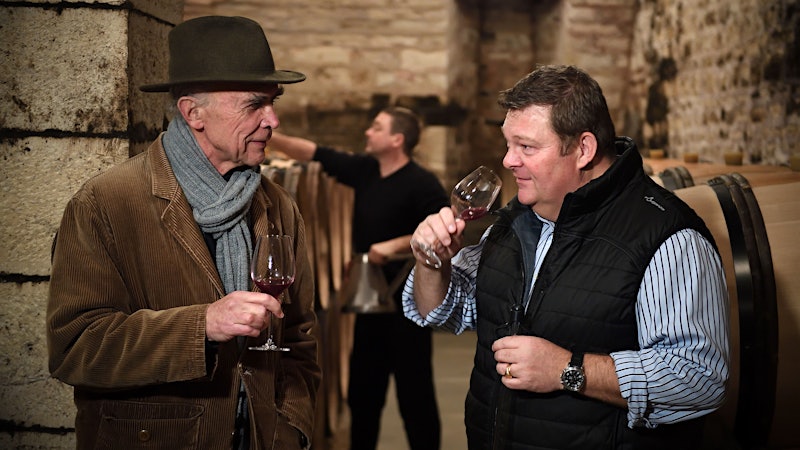Will Chianti Classico’s Gran Selezione Designation Guarantee Quality?
The Consorzio of Chianti Classico introduced its new designation, Gran Selezione, in 2013. It represents the pinnacle of a quality pyramid whose base comprises the Chianti Classico annate and mid-tier riserva categories. The goal is to have stricter standards to drive quality and inspire consumer confidence in the wines of Chianti Classico. The new category is projected to represent about 10 percent of the Chianti Classico production.
Currently, there is a lot of confusion about Chianti. It can be made from a large area in central Tuscany and can sell for anywhere from $10 to $200 a bottle.
Chianti Classico Gran Selezione must be made from estate-grown grapes of a single vineyard (or selection of the estate's best parcels) and the aging requirements are longer than those of riserva, 30 months vs. 24 months, including three months in bottle. Sangiovese must make up at least 80 percent of the blend, with other approved grape varieties allowed by the Denominazione di Origine Controllata e Garantita (DOCG).
The Gran Selezione wines are also subject to a panel tasting along with chemical and physical analyses by authorized labs.
This all sounds fine, in theory. Now, the first Gran Selezione wines are about to be released. According to Silvia Fiorentini of the Chianti Classico Consorzio, 47 wines have been approved to date, with a 10 percent fail rate of the overall submissions.
My first look at the new premium category was San Felice's Chianti Classico Il Grigio Gran Selezione 2010. Winemaker Leonardo Bellaccini came by Wine Spectator's New York office with San Felice president Mario Cuccia and general manager Davide Profeti with the estate's 2010 vintage.
Since Bellaccini joined San Felice in 1984, the estate embarked on viticultural research in conjunction with the University of Florence. Much of that work has been genetic research of the indigenous grape varieties of Tuscany. There are more than 5 acres in San Felice's Vitiarium, a "museum" of vines planted to 270 different grapes.
Bellaccini and his colleagues saw an opportunity to combine these two decades of research and work in San Felice's nearly 350 acres of vineyards with the new Gran Selezione designation. "We wanted to show this was a project we had before and Gran Selezione gave us an opportunity to use it," he said.
In addition to using the best plots of Sangiovese (Chiesamonti, Colti and Pianaccio) and the oldest vines, what's interesting about San Felice's new wine is the other grapes in the blend. Sangiovese, at 80 percent, meets the regulatory minimum, while the remaining 20 percent includes Cilegiolo and Malvasia Nera (for aromas and fruit), Abrusco (for color), Pugnitello (for structure) and Mazzese (for spice). These are all indigenous Tuscan grapes developed from the Vitiarium.
The San Felice Chianti Classico Il Grigio Gran Selezione 2010 is a very aromatic red, offering deep cherry, licorice and hints of leather and spice. Its rich, sweet fruit is balanced by vibrant acidity, while the cherry, leather, tobacco and spice flavors persist on the long finish.
It saw 20 to 25 days of maceration on the skins, initially with pumping over, then punching down the cap for the last two weeks. Half the wine was aged in 9,000- to 10,000-liter casks and the other half in 500-liter tonneaux and barriques. About 10 to 15 percent of the barriques were new. After two years in wood, it was blended and bottled, where it rested for six months.
San Felice also continues to make its Chianti Classico Il Grigio Riserva, which is 100 percent Sangiovese. This may be confusing, with two Il Grigios on the market, so be sure to look for the Gran Selezione designation on the label.
Nonetheless, if San Felice's new entry into the Chianti Classico Gran Selezione designation is any indication, this could be an exciting new era for Tuscany's historic region.
During Vinitaly 2014 this past week, the annual Italian wine fair, plus subsequent visits to Tuscany, I have tasted about a half-dozen Gran Selezione wines, including Castello di Meleto 2010, Mazzei Castello di Fonterutoli 2010 and Il Molino di Grace Il Margone 2010. Giovanni Manetti of Fontodi also told me what was formerly the estate's Vigna del Sorbo Riserva will become the Gran Selezione.
There appears to be good support from the producers. Now it's the consumers' turn to buy into the new Gran Selezione concept.











